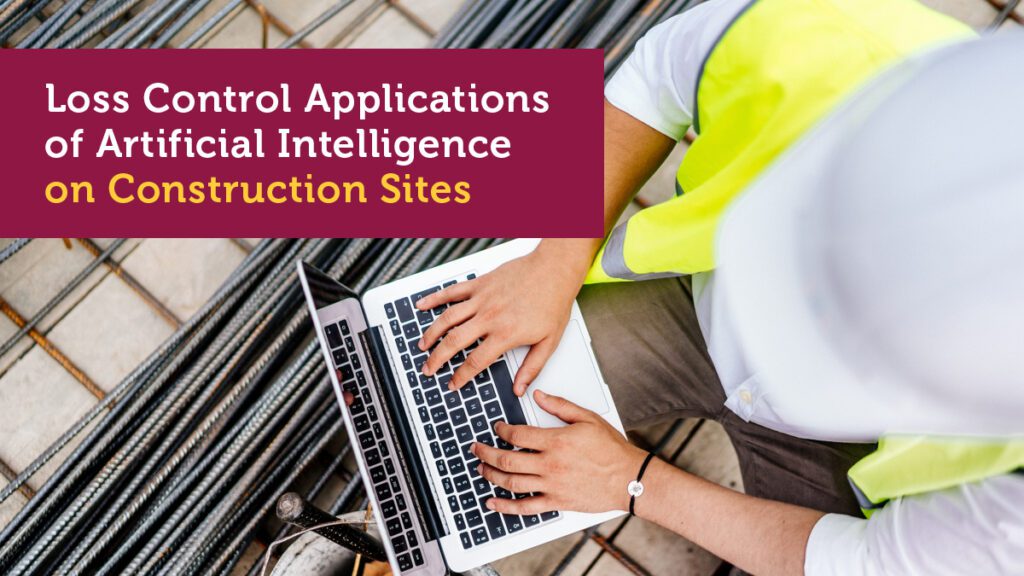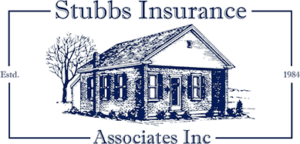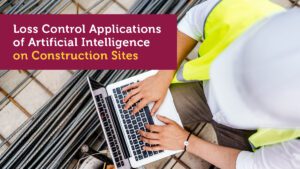Loss Control Applications of Artificial Intelligence on Construction Sites

Artificial intelligence (AI) is transforming the construction industry in remarkable ways. As projects become more complex and safety demands intensify, AI offers practical solutions to long-standing challenges. From preventing accidents to streamlining operations, AI is a powerful ally for construction professionals.
At its core, AI empowers teams to anticipate problems before they happen. By analyzing historical data and real-time inputs, AI identifies risks that may otherwise go unnoticed. Whether it’s pinpointing potential equipment failures or alerting workers to unsafe conditions, AI helps crews stay one step ahead.
Shawn Gentry, a loss control construction specialist at Central Insurance, shares his perspective on how AI is reshaping the industry. “We’re not just talking about futuristic ideas,” he says. “These tools are being used right now to improve safety, reduce losses, and make construction sites more efficient.”
Below, we explore how AI applications make a difference today and what’s on the horizon for construction site management.
How AI Enhances Safety and Prevents Losses on Construction Sites
“One of the big areas where AI is making an impact is during the pre-construction phase,” explains Gentry. AI platforms utilize predictive analytics to identify potential risks before they materialize.
Learn More: Identifying Hazards on Construction Sites
For example, by analyzing specifications and historical data, AI can highlight high-risk activities, enabling safety teams to allocate resources more effectively. This proactive approach saves time and resources by focusing on the areas that need the most attention.
Key Applications:
Wearable Technology: Devices monitor workers’ real-time heat levels, exertion, and proximity to hazards. “Think of it like a Fitbit,” Gentry says. They send alerts when fatigue, dehydration, or unsafe conditions are detected. These devices also enhance situational awareness by vibrating to warn workers of nearby equipment or open edges, reducing the risk of accidents.
Video Analytics: AI-powered cameras can identify hazards like cluttered walkways, improperly secured scaffolding, or workers without proper personal protective equipment (PPE). “Some systems even use facial recognition to ensure only authorized personnel access restricted areas,” Gentry adds, bolstering site security.
Real-Time GPS Tracking: AI-enabled GPS devices can locate workers during emergencies. “Imagine a collapse or fire on-site,” Gentry says. “Being able to pinpoint a worker’s exact location can save critical minutes—and potentially lives.”
Monitoring Equipment Performance and Predicting Failures
AI doesn’t just focus on workers—it also ensures equipment is running smoothly and safely. Gentry highlights that “a significant portion of equipment losses stem from maintenance issues. ” AI systems can predict failures and schedule timely repairs, reducing downtime and costly incidents.
How AI Helps:
Real-Time Alerts: Sensors monitor machinery for overheating, unusual vibrations, improper use, or excessive wear and tear. Alerts notify operators and managers instantly, enabling swift action.
Historical Data Analysis: AI reviews past performance and failure data to predict potential risks. For example, if machinery is prone to overheating after a certain number of hours, the system can recommend preemptive maintenance.
Diagnostic Software: These systems help operators identify inefficiencies, such as improper handling or suboptimal settings, which can reduce the risk of accidents and prolong equipment lifespan.
Did You Know? Predictive maintenance can reduce unplanned downtime by 30%-50% and maintenance costs by 20%-30%
The ROI of AI in Loss Control
Cost is a common concern for construction companies that are hesitant to adopt AI. “”The initial expense might seem difficult to embrace,” acknowledges Gentry. However, the return on investment (ROI) is undeniable when you factor in reduced accidents, fewer delays, and overall project efficiency.
Benefits of AI Implementation:
Preventing High-Cost Claims: “A critical fall could result in a million-dollar claim and significant indirect costs,” Gentry explains. When compared, the investment in AI systems can seem minimal relative to the cost of a large claim.
Improved Productivity: AI streamlines scheduling, allowing projects to stay on track and reducing delays caused by accidents or equipment failures.
Operational Efficiency: AI-enabled monitoring tools allow safety managers to oversee multiple sites from a central location, reducing travel time and on-site inspections.
Overcoming Barriers to Adoption
Adopting AI requires strategic planning and a clear understanding of its benefits. Gentry advises construction companies to “start small and slow-roll the implementation.”
Why Is Adoption Slower in Construction?
The construction industry has traditionally been slower to adopt new technologies for several reasons:
Cultural Resistance: Construction has a deeply ingrained “we’ve always done it this way” mindset, making some teams hesitant to embrace change.
Cost Concerns: The upfront investment in AI can seem daunting, especially for smaller firms with tight budgets.
Complexity of Implementation: Integrating new tools into existing workflows can feel overwhelming, particularly when teams are already stretched thin. Learn more about the construction labor shortage.
How to Foster Openness to New Tech:
Integrating a new way of life into a traditional field containing a lot of generational knowledge is difficult. Below, Gentry shares some tips to create a more accepting environment with your team:
Leadership Buy-In: Gentry suggests company owners and project leaders champion AI adoption by clearly communicating its long-term benefits and aligning it with business goals.
Education and Training: He also emphasizes providing hands-on training to help workers understand how AI tools can make their jobs easier and safer. Highlighting specific use cases, like detecting scaffold cracks before accidents, builds trust in the technology.
Gradual Implementation: Gentry recommends starting with pilot programs focused on one or two applications, such as safety monitoring or predictive maintenance. This approach minimizes disruption and allows teams to see tangible results.
Celebrate Successes: In Gentry’s experience, sharing stories of early wins across the company, such as preventing a costly claim or improving project efficiency, demonstrates the ROI of AI.
Engage Younger Workers: He also notes younger employees are often more comfortable with technology. Empower them as champions for AI adoption, helping bridge the gap with more skeptical team members.
Did You Know? AI I implementation in construction can improve productivity by 30%
The Future of AI in Construction Site Management
Looking ahead, Gentry envisions AI becoming standard practice among top-tier general contractors. “Gradually, owners and general contractors will likely start requiring AI adoption as part of their contracts,” he predicts.
Gentry also pinpoints some emerging trends in the industry:
Generational Shifts: As younger, tech-savvy workers join the workforce, they’ll embrace AI tools more readily, filling skill gaps left by retiring professionals.
Trickle-Down Adoption: General contractors will push AI tools down to subcontractors as they recognize the benefits. “AI will follow the same path as construction management software,” Gentry observes. “Not everyone uses it now, but those who do see real benefits.”
Advanced Capabilities: Gentry foresees AI systems incorporating augmented reality (AR) and virtual reality (VR) for enhanced training simulations and more sophisticated integrations with project management platforms.
As AI technology evolves, its potential to transform loss control strategies on construction sites will only grow. From improving safety and equipment reliability to delivering a measurable ROI, AI is proving its value. By embracing these innovations, construction companies can protect their workers, enhance efficiency, and secure their bottom line.
The Central Difference
AI is transforming the construction industry, offering practical solutions to long-standing challenges like safety, efficiency, and risk management. It’s helping teams stay proactive and keep projects on track.
“At Central, we build construction expertise to understand and empathize with the typical contractor. So we’re not just pushing technology for its sake; we’re showing how it makes your jobs safer and your projects more efficient. And that’s a win for everyone.”
At Central, we understand contractors’ unique pressures and the importance of staying ahead in a fast-changing industry. That’s why we go beyond insurance to provide expert loss control services and support tailored to your needs.
Learn More: Contractor Insurance: The Policies You Need to Protect Your Business
Our partnership gives you the tools and resources to navigate challenges confidently and embrace innovations that protect your team, projects, and bottom line.
Contact an independent agent today to explore your options with Central.

The information above is of a general nature and your policy and coverages provided may differ from the examples provided. Please read your policy in its entirety to determine your actual coverage available.
Products underwritten by Central Insurance and affiliated companies.
Copyright © 2025 Central Insurance. All rights reserved.
Like this:
Loading…




